Midway (film)
6.2 /10 1 Votes
54% Rotten Tomatoes Director Jack Smight Music director John Williams Duration Country United States | 6.7/10 IMDb 2.5/4 Roger Ebert Genre Action, Drama, History Screenplay Donald S. Sanford Writer Donald S. Sanford Language English | |||||||||||||||||||||||||||||||||
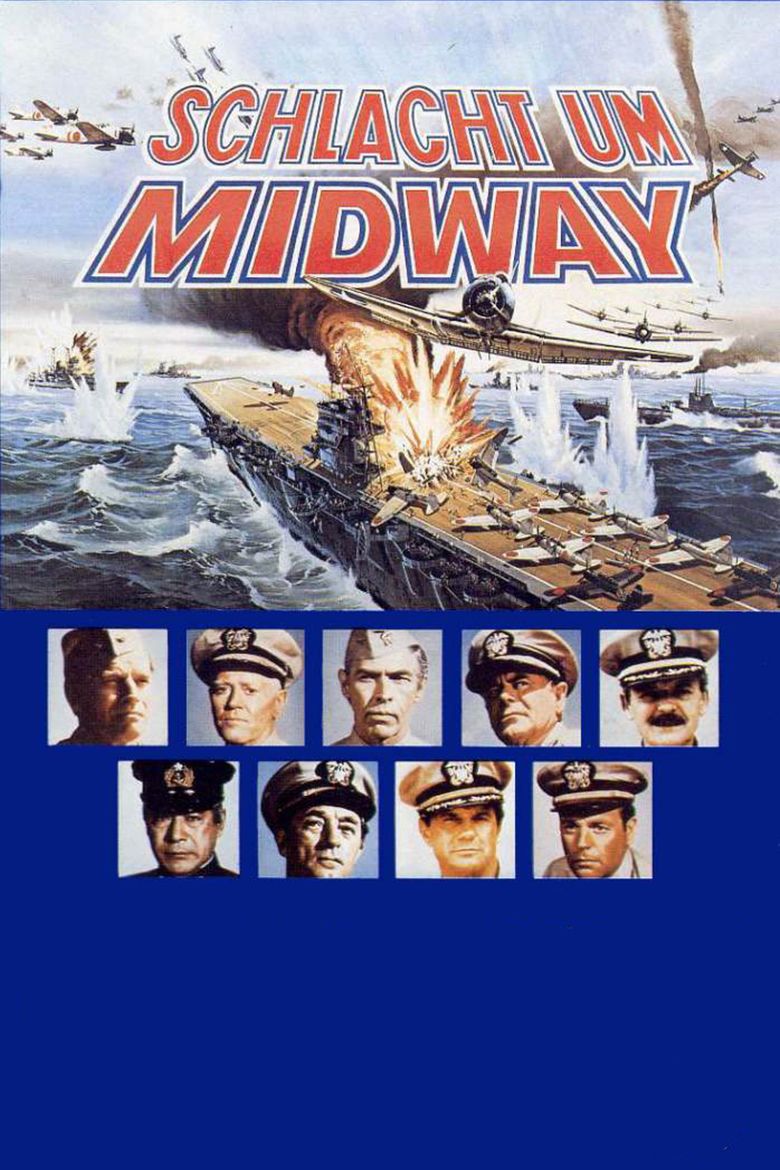 | ||||||||||||||||||||||||||||||||||
Release date June 18, 1976 (1976-06-18) (US) Cast Charlton Heston (Capt. Matthew Garth), Henry Fonda (Adm. Chester W. Nimitz), James Coburn (Capt. Vinton Maddox), Glenn Ford (Rear Admiral Raymond A. Spruance), Hal Holbrook (Cmdr. Joseph Rochefort), Robert Mitchum (Vice Adm. William F. 'Bull' Halsey Jr.)Similar movies The Thin Red Line , When Trumpets Fade , None But the Brave , Hell Is for Heroes , Fury , Saving Private Ryan Tagline A war's defining battle. A nation's defining moment.p | ||||||||||||||||||||||||||||||||||
Battle of midway 1976 movie original official theatrical trailer
Midway, released in the United Kingdom as Battle of Midway, is a 1976 American Technicolor war film directed by Jack Smight and produced by Walter Mirisch from a screenplay by Donald S. Sanford. The film features an international cast of stars including Charlton Heston, Henry Fonda, James Coburn, Glenn Ford, Hal Holbrook, Toshiro Mifune, Robert Mitchum, Cliff Robertson, Robert Wagner, James Shigeta, Pat Morita, Robert Ito and Christina Kokubo, among others.
Contents
- Battle of midway 1976 movie original official theatrical trailer
- Midway victory scene 3 carriers burning
- Plot
- Filming
- Sound
- Action
- Reception
- Television version
- References
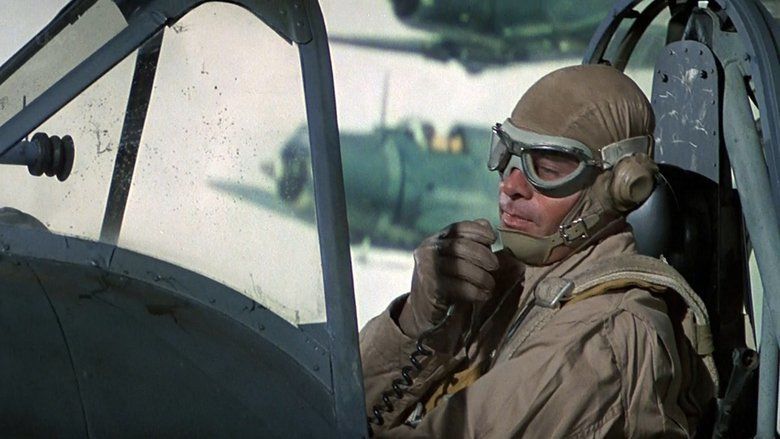
The music score by John Williams and the cinematography by Harry Stradling, Jr. were both highly regarded. The soundtrack used Sensurround to augment the physical sensation of engine noise, explosions, crashes and gunfire. Despite mixed reviews, Midway became the tenth most popular movie at the box office in 1976.
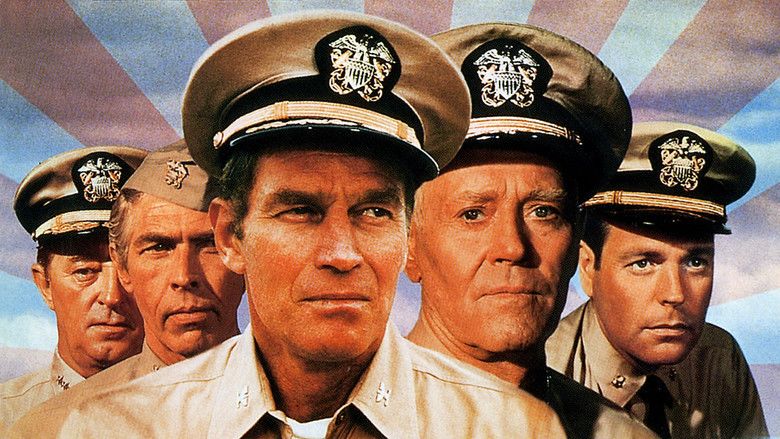
Midway victory scene 3 carriers burning
Plot
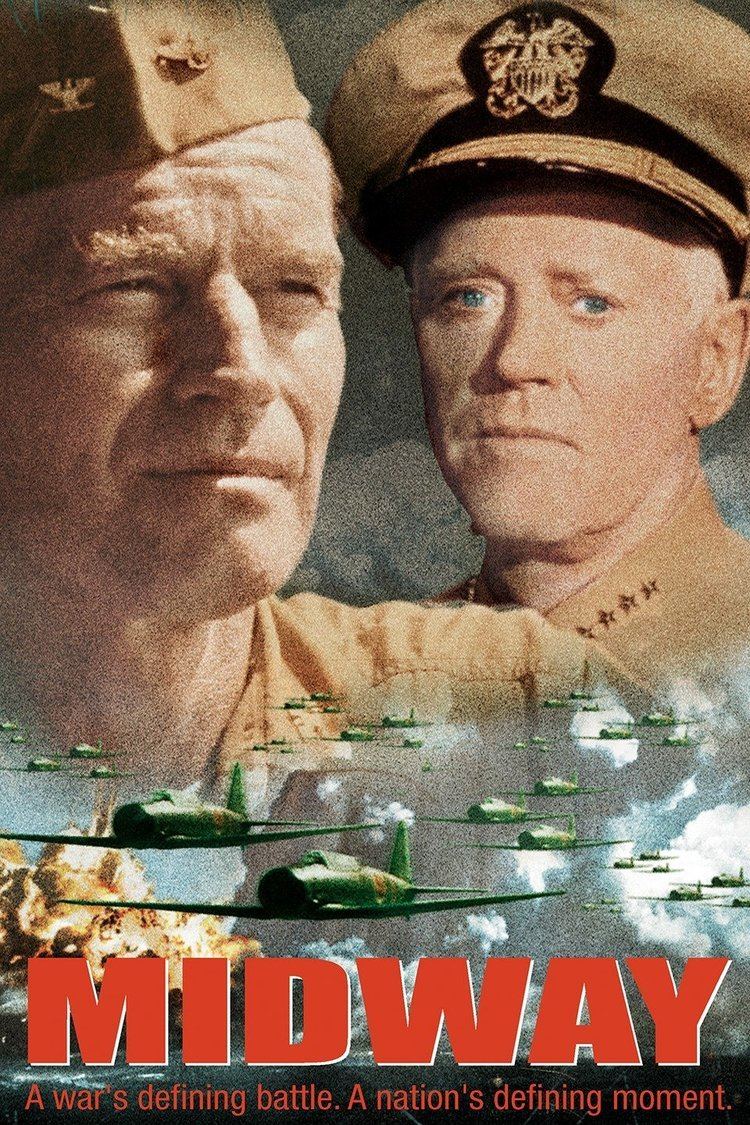
The film chronicles the Battle of Midway, a turning point in World War II in the Pacific. The Imperial Japanese Navy had been undefeated until that time and out-numbered the American naval forces by four to one.

The film follows two threads; one centered on the Japanese chief strategist Admiral Isoroku Yamamoto, and the other around two fictional characters: Captain Matt Garth and his son, Ensign Thomas Garth, both naval aviators. Matt Garth is a senior officer who is involved in various phases of the US planning and execution of the battle, while Thomas Garth is a young pilot romantically involved with Haruko Sakura, an American-born daughter of Japanese immigrants, who has been interned with her parents. Captain Garth calls in all of his favors with a long-time friend to investigate the charges against the Sakuras. He apparently has some success, as Haruko is free and at dockside when the injured younger Garth is carried off the ship at the end of the film, while Captain Garth himself was killed at the end of the battle when his plane crashed.

The film starts with the Doolittle raid, April 1942, and then goes on briefly to mention the Battle of the Coral Sea (May 1942). It then describes the planning for the Battle of Midway (June 1942), depicting the creation of a complicated battle plan. Unknown to the Japanese, American signals intelligence has broken the Japanese Naval encryption codes and suspects that the ambush will take place at Midway Island. They then trick the Japanese into confirming it. American Admiral Chester Nimitz, plays a desperate gamble by sending his last remaining aircraft carriers to Midway before the Japanese to set up his own ambush. The gamble pays off and all four of the Japanese carriers are destroyed in the battle of Midway.

Successful in saving Midway, but at a heavy cost, Nimitz reflects that Yamamoto "had everything going for him", asking "were we better than the Japanese, or just luckier?"
Filming
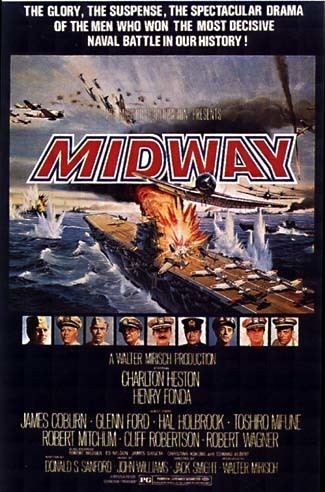
Midway was shot at the Terminal Island Naval Base, Los Angeles, California, the U.S. Naval Station, Long Beach, California, and Naval Air Station Pensacola, Florida. The on-board scenes were filmed in the Gulf of Mexico aboard the USS Lexington. The Lexington, an Essex-class aircraft carrier, was the last World War II-era carrier left in service at that point, although the ship was completed after the battle. She is now a museum ship at Corpus Christi, Texas.

Scenes depicting Midway Island were filmed at Point Mugu, California. "Point Mugu has sand dunes, just like Midway. We built an airstrip, a tower, some barricades, things like that," said Jack Smight. "We did a lot of strafing and bombing there."
A Consolidated PBY-6A Catalina BuNo 63998, N16KL, of the Commemorative Air Force, was used in depicting all the search and rescue mission scenes.
Sound
The film was the second of only four films released with a Sensurround sound mix which required special speakers to be installed in movie theatres. The other Sensurround films were Earthquake (1974), Rollercoaster (1977), and Battlestar Galactica (1978). The regular soundtrack (dialog, background and music) was monaural; a second optical track was devoted to low frequency rumble added to battle scenes and when characters were near unmuffled military engines.
Action
Many of the action sequences used footage from earlier films: most sequences of the Japanese air raids on Midway are stock shots from 20th Century Fox's Tora! Tora! Tora! (1970). Some scenes are from the Japanese Toho film Hawai Middouei daikaikusen: Taiheiyo no arashi (1960) (which also stars Mifune). Several action scenes, including the one where an Mitsubishi A6M Zero slams into the Yorktown's bridge, were taken from Away All Boats (1956); scenes of Doolittle's Tokyo raid at the beginning of the film are from Thirty Seconds Over Tokyo (1944). In addition, most dogfight sequences come from wartime gun camera footage or from the film Battle of Britain (1969).
Interestingly, cast member Henry Fonda (Admiral Nimitz) had been one of the narrators of the 1942 John Ford documentary The Battle of Midway, some footage from which was used in the 1976 film. The only actress with a speaking part in the original film was Christina Kobuko as Horuko. In the TV version of the film Susan Sullivan appears playing Matt Garth's girlfriend. Later video versions dropped Sullivan to emphasize the essentially all-male cast and wartime action.
As with many "carrier films" produced around this time, the US Navy Essex class aircraft carrier USS Lexington played the parts of both American and Japanese flattops for shipboard scenes.
Reception
Midway proved extremely popular with movie audiences, earning over $43 million at the box office, becoming the tenth most popular movie of 1976. Robert Niemi, author of History in the Media: Film and Television, stated that Midway's "clichéd dialogue" and an overuse of stock footage led the film to have a "shopworn quality that signalled the end of the heroic era of American-made World War II epics." He described the film as a "final, anachronistic attempt to recapture World War II glories in a radically altered geopolitical era, when the old good-versus-evil dichotomies no longer made sense."
Later studies by Japanese and American military historians call into question key scenes, like the dive-bombing attack that crippled the first Japanese carrier, the Akagi. In the movie, American pilots report, "They've got bombs all over their flight deck! We caught 'em flat-footed! No fighters and a deck full of bombs!" As Jonathan Parshall and Anthony Tully write in "Shattered Sword" (2005), aerial photography from the battle showed nearly empty decks. In addition, Japanese carriers loaded armament onto planes below the flight deck, unlike American carriers (as depicted earlier in the film). The fact that a closed hangar full of armaments was hit by bombs made damage to Akagi more devastating than if planes, torpedoes and bombs were on an open deck.
On review aggregator website Rotten Tomatoes, the film has a 54% score based on 13 reviews, with an average rating of 5.9/10.
Television version
Shortly after its successful theatrical debut, additional material was assembled and shot in standard 4:3 ratio for a TV version of the film, which aired on NBC. A major character was added: Susan Sullivan played Ann, the girlfriend of Captain Garth, adding depth to his reason for previously divorcing Ensign Garth's mother, and bringing further emotional impact to the fate of Captain Garth. The TV version also has Coral Sea battle scenes to help the plot build up to the decisive engagement at Midway. The TV version was 45 minutes longer than the theatrical film and aired over two nights. Jack Smight directed the additional scenes.
In June 1992, a re-edit of the extended version, shortened to fill a three-hour time slot, aired on the CBS network to commemorate the 50th anniversary of the Midway battle. This version brought in successful ratings.
Part of this additional footage is available as a bonus feature on the Universal Pictures Home Entertainment DVD of Midway.
The film is recognized by American Film Institute in these lists:
References
Midway (film) WikipediaMidway (film) IMDbMidway (film) Rotten TomatoesMidway (film) Roger EbertMidway (film) themoviedb.org
